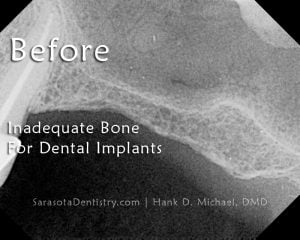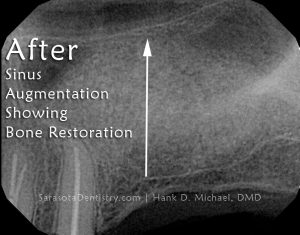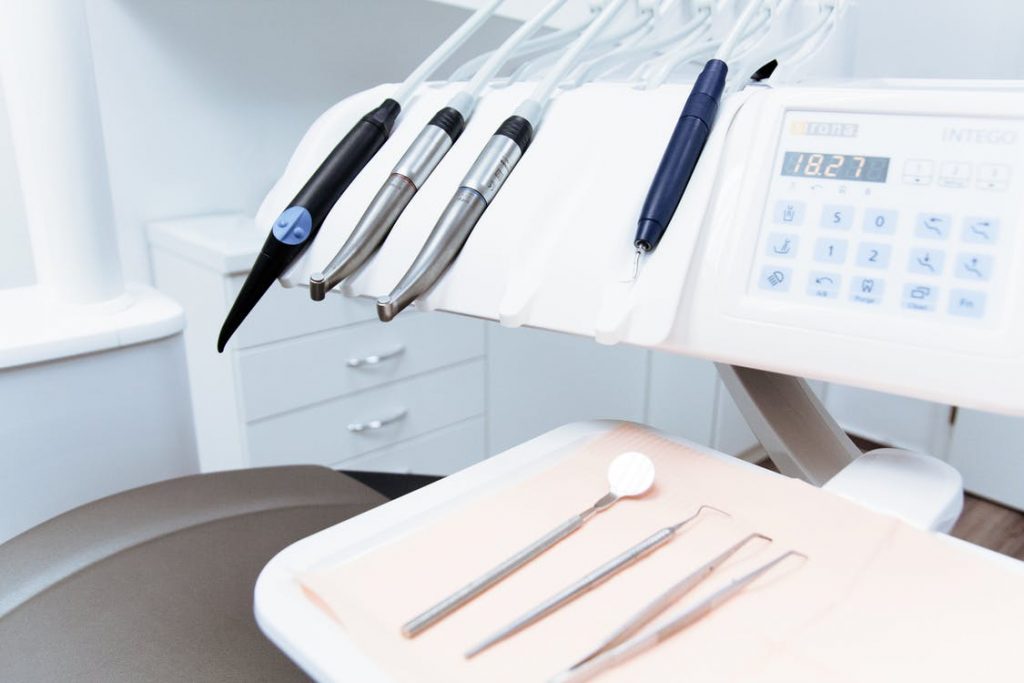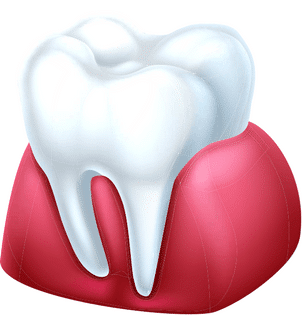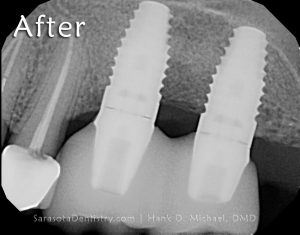Frequently Asked Questions
What is a dental bone graft used for?
Dental bone grafting is used to build up a section of the jaw bone that is too thin, soft or weak to support a dental implant. The procedure involves placing specialized bone grafting material into or onto the jaw bone, where it develops into a strong, stable base that can be used by dental implants to restore the functionality of the teeth and improve the appearance of the patient.
What should I expect right after a dental bone graft?
Immediately following the procedure you'll need to avoid touching the surgical site, rinsing your mouth vigorously or eating anything that could contaminate the wound. You'll also need to refrain from drinking through a straw or smoking, as the suction could interfere with blood clotting at bone graft site. You may need to keep a piece of surgical gauze over the treatment area, and that gauze may have to be replaced several times until post-operative bleeding stops. A cold compress is also advised for the first 24 hours to prevent swelling (20 minutes on and 20 minutes off). Oral anti-inflammatory medications such as Ibuprophen (Advil), Naproxen (Alieve), or prescriptions steroids such as Medrol Dose Pack or Decadron. Keeping the swelling down with cold compresses or medication are instrumental in preventing pain that could be associated with the bone grafting procedure. Your dentist will give you specific instructions based on the type of bone graft being performed.
You should plan on taking at least a day off from work or school, and up to three days if your duties involve operating heavy machinery or other safety-sensitive tasks. If an advanced bone grafting procedure is being performed, you can expect swelling (even with medication and cold compresses) along with bruising. Swelling peaks at 72 hours so don’t be alarmed as the swelling worsens over the first 3 days. For advanced bone grafting procedures, don’t plan on any social events for at least two weeks since you may have significant bruising. Good news, the swelling and bruising are generally not accompanied by pain if medication is taken as directed.
How long does it take for a dental bone graft to heal?
The length of time it takes for a dental bone graft to fully heal varies with the type of bone graft procedure, the amount of bone loss to be treated, the type of grafting material used and the overall health and wellness of the patient. As people age the body naturally takes longer to recover, so older patients may experience longer recovery times than young adults do. Other factors such as systemic disease, vitamin D deficiency and medication history can play a significant role in the healing of a bone graft or dental implant.
In most patients the bone graft will develop into a strong, stable bone within three to nine months, although, for larger graft sites it may take a year or longer to fully heal. Generally, implants can be placed in 3-9 months even in the larger grafts that may require a couple of extra months.
How long does dental bone graft pain last?
Following your dental bone grafting you may experience mild to moderate pain for several days once the anesthesia wears off, which usually occurs within four to six hours. There could be swelling and bruising around the treatment site that may develop up to 72 hours after the procedure, and you may feel pressure throughout your face and sinuses due to post-operative inflammation.
While everyone experiences pain differently, in most cases patients are able to manage their discomfort with non-narcotic, over-the-counter medications such as ibuprofen and/or acetaminophen. Your dental surgeon may also prescribe antibiotics to prevent painful infection following your dental bone graft.
Although it can take several months for a dental bone graft to fully heal, most patients are pain-free within a few weeks or less.
How much does a dental bone graft cost?
There are a number of different dental bone grafting procedures that can be performed using different grafting materials - that's why there is a wide range of prices for dental bone grafting. Other factors that influence the cost of bone grafts are the size of the treatment site, the amount of time the procedure takes, and how much pre- and post-operative care the patient needs. Additionally, dental materials may be indicated to aid in the bone grafting process. These dental materials such as Infuse and Gem-21 are very expensive and thus leads to a more expensive procedure. The good news is that these products greatly enhance success. They also decrease the pain and cost associated with more invasive bone harvesting procedures that were required in the past when these products were not available.
Pricing for dental bone grafts starts at approximately $300 to $800 per tooth or implant area and can go up to $2000 to $3000 per implant site. Keep in mind that these prices only refer to the cost of the bone grafting. Once the graft site is fully healed an implant can be placed, and the cost for implants is in addition to dental bone graft costs.
Many dental insurance plans provide either partial or total coverage for bone grafting when the procedure is deemed to be medically-necessary. If the bone loss was caused by an accident or injury, other financing options may be available. Unfortunately, dental insurance generally has a maximum benefit of $1000 - $2000 per year so make sure you check your yearly maximum benefit. Also, if it’s a new policy, look out for pre-existing condition clause and wait period requirements.

